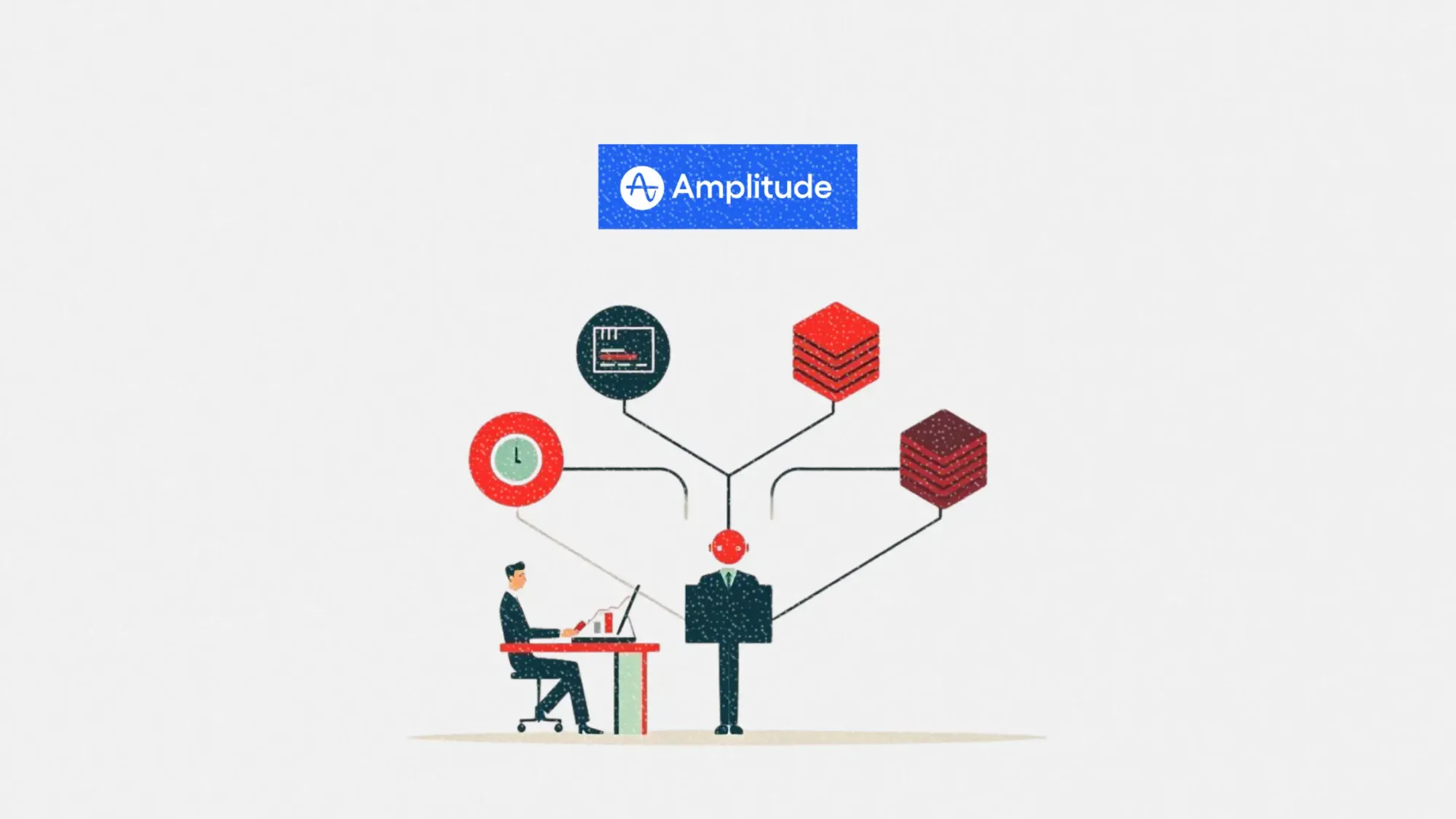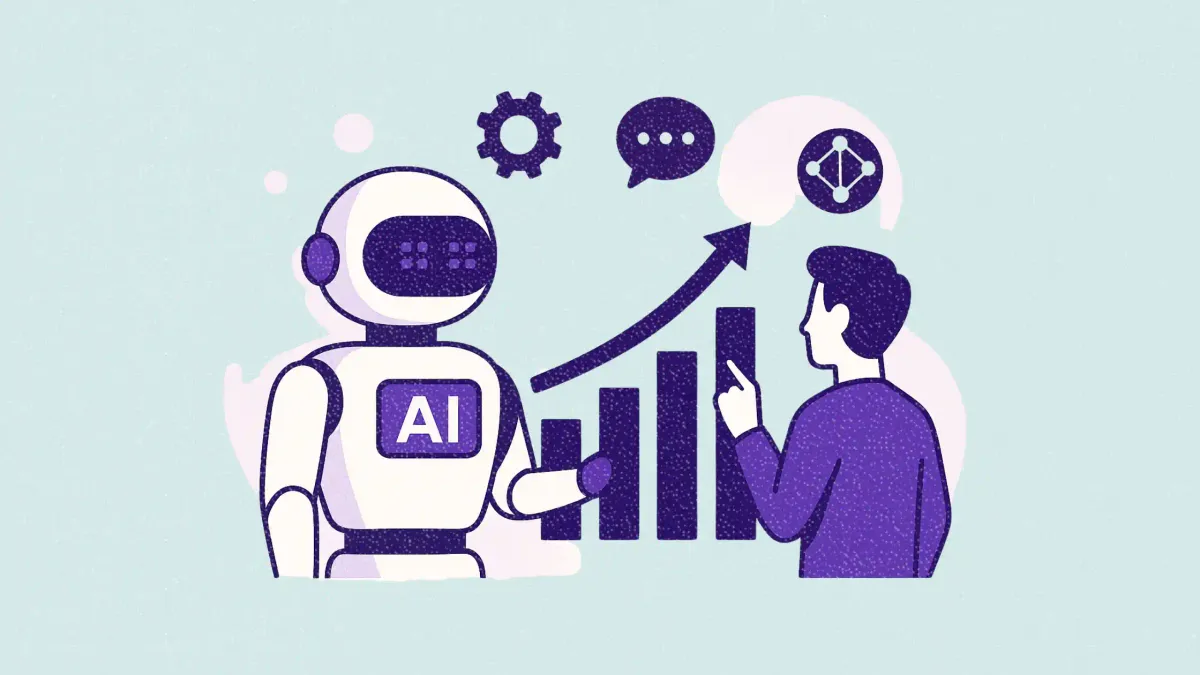Amplitude shares 2026 AI predictions for marketers
Amplitude’s AI forecast lays out what will define competitive edge in 2026. Here’s how to prepare.

Amplitude just dropped a bold roadmap for where AI is headed, and what it spells out isn’t just another hype cycle.
The 2026 AI Playbook, backed by insights from execs at Amplitude, Glean, and Factory, outlines six predictions that could reshape how marketing, product, and tech teams work together or fall behind.
This article breaks down the report’s biggest themes and what marketing leaders should be doing now to stay relevant in an AI-native world.
Short on time?
Here’s a table of contents for quick access:
- AI becomes the default interface
- Personalization goes from rules to real-time
- Data quality becomes a marketing moat
- Your next audience might be AI
- Planning and resourcing go predictive
- Testing scales with synthetic users

1. AI becomes the default interface
Say goodbye to buttons and scrolls. In the next evolution of digital experiences, AI interfaces, not pages, will shape user interactions. Think agents that handle tasks with voice, video, or mixed-modal inputs. These interfaces will evolve based on real-time behavior instead of static navigation patterns.
Why it matters for marketers:
- Brand value needs to survive even when the interface disappears.
- Your messaging must adapt to a world where users interact through assistants, not webpages.
“Instead of navigating between pages and processes, users will execute complex tasks using simple prompts, not clicks.”
2. Personalization goes from rules to real-time
Forget segments and if-then statements. Generative AI enables truly adaptive personalization based on behavior and context, not just past data. It allows product and marketing teams to run micro-experiments, test messages, and reconfigure cohorts automatically.
The opportunity is scalable one-to-one marketing without blowing up your creative team. The risk is sounding like a surveillance system if you overdo it.
“Your goal shouldn’t be user-level customization. It should be accelerating the iterative loop of creating targeted product experiences.” — James Evans, Head of AI Products at Amplitude
3. Data quality becomes a moat
It’s blunt but true: bad data means bad AI. The report emphasizes that unified, governed, and real-time data is no longer just a tech issue. It is now a strategic differentiator. Companies that prioritized data governance in early AI experiments are already pulling ahead.
For marketing teams, this means:
- Investing in unified customer data strategies is non-negotiable
- AI personalization and experimentation will fall flat without clean data pipelines
4. Your next audience might be AI
This might be the most controversial call. In the future, you won’t just market to people. You’ll market to large language models (LLMs). With consumers turning to AI assistants for shopping and content, the "answer economy" is replacing the search economy.
Key implications:
- LLM-optimized content will rival SEO in importance
- Marketers must build brand credibility with machines, not just humans
- Metrics like “share of model” will matter just as much as share of voice
“LLMs are looking beyond keywords, focusing on concepts and relationships. Content should explain what the product is and how it fits broader use cases.”
5. Strategic planning becomes AI-assisted
AI isn’t just writing blog posts. It’s helping executives plan roadmaps, allocate budgets, and simulate go-to-market strategies. The report urges leaders to stop thinking of AI as an automation tool and start seeing it as a strategic copilot.
For CMOs and CPOs, this means:
- Building forecasts and campaign simulations with AI input
- Using scenario modeling to pick high-ROI bets before spend goes live
- Collaborating more tightly with tech and product counterparts on AI tools
6. Synthetic users accelerate testing
AI-generated users might sound dystopian, but they’re coming. The playbook predicts a rise in synthetic testing where avatars mimic human behavior for faster A/B testing, UX flows, or creative validation.
Marketers can:
- Test new campaign concepts or creative variations without needing real user traffic
- Run experiments at scale with lower cost and faster cycles
- Still use human feedback to refine results. This is not a full replacement
“71% of market researchers expect synthetic responses to power most research by 2027.”
The message from Amplitude’s 2026 playbook is clear. The winners won’t just use AI faster. They’ll adapt faster.
That means rethinking how marketing and product teams collaborate, experimenting more with new tools, and making AI strategy a cross-functional mission instead of a siloed tech sprint.




